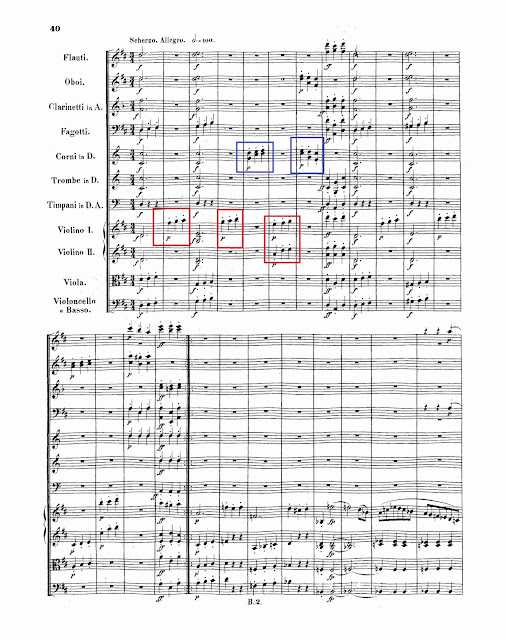CDLVI. BEETHOVEN, Ludwig van (1770-1827)
[for the piano arrangement, see Post CCLXVII; for posts on the other eight symphonies, see the Index.]
We are on the cusp of the Early and Middle periods -- Beethoven has replaced the traditional minuet with a true scherzo, and the music is filled with humor and a gravitas looking forward to the mighty Eroica.
The audience was probably both delighted and confused. From a contemporary Viennese critic:
second theme in the dominant:
The development eventually introduces the second theme in G Major. Notice the Haydnesque treatment with the light winds alternating with stacccato triplets in the violins:
Second movement
In the dominant, a passionate, full-bodied, lyrical theme -- first in the strings, then oboes and bassoons. A variation filled with longing leading tones follows, and then Beethoven is off on a rhapsodic variations treatment:
Third movement
Look how Beethoven moves the staccato 1/4-notes between violins and horns:
The Trio features light winds followed by gruff strings:
Fourth movement
A sharp trilled motif followed by a bouncing 1/4-note phrase ...
This is followed by a rich, sweeping theme in the strings and winds:
Return to the recap with a humorous tweet:
which he uses again in the Coda, in closer proximity to the trill theme:
















No comments:
Post a Comment